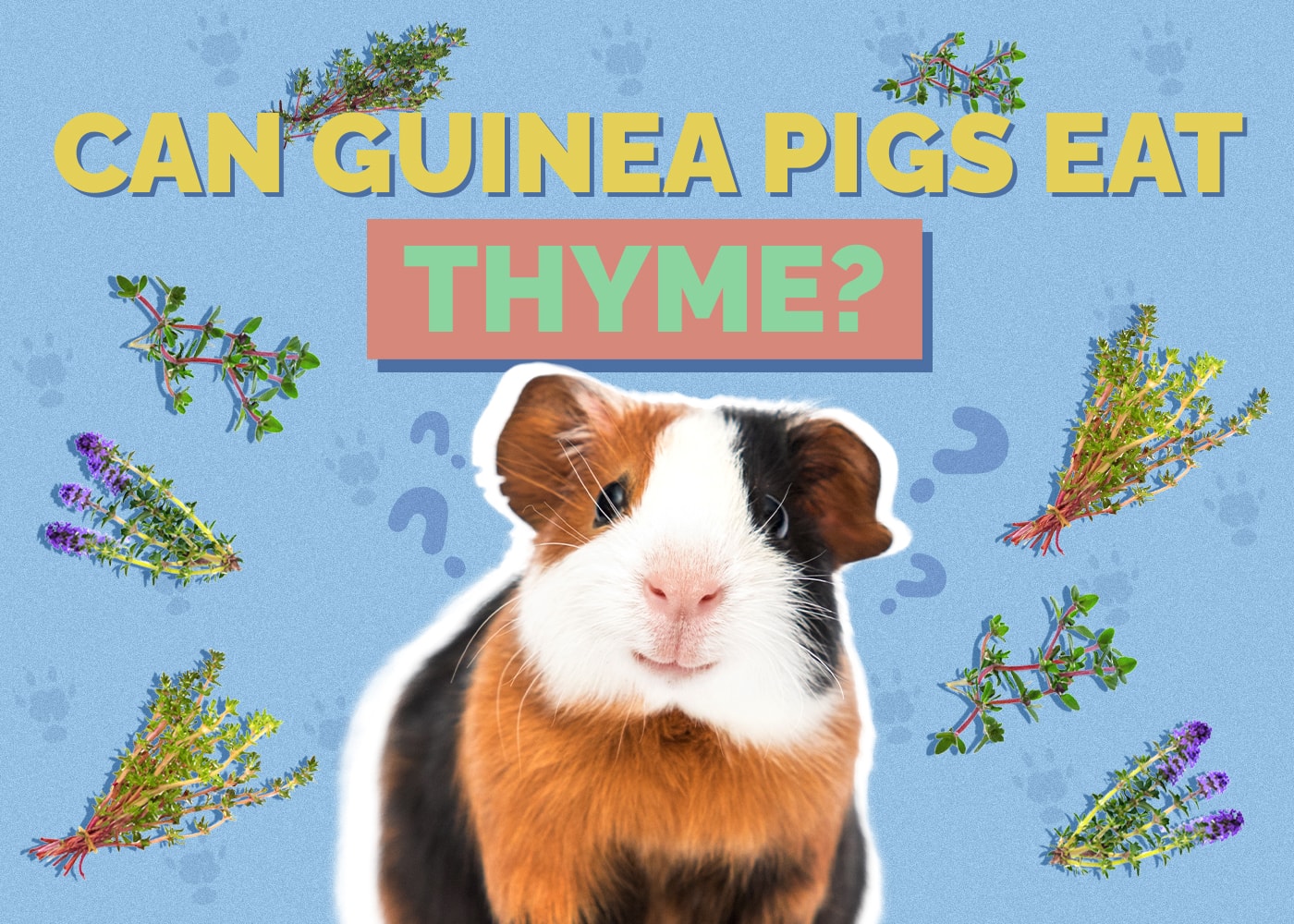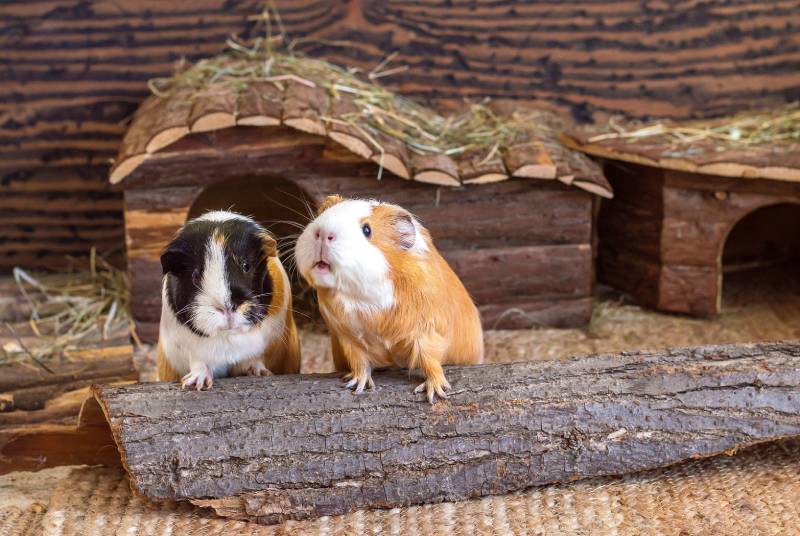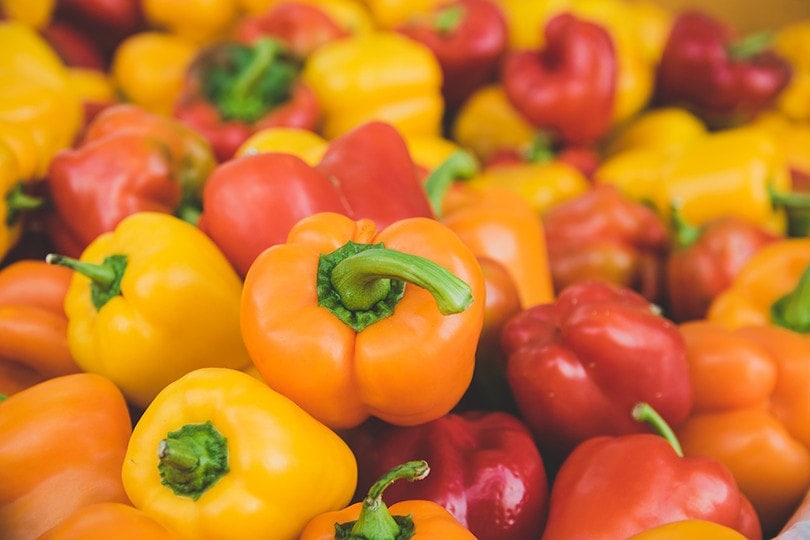Can Rabbits & Guinea Pigs Live Together? Important Housing Facts

Updated on
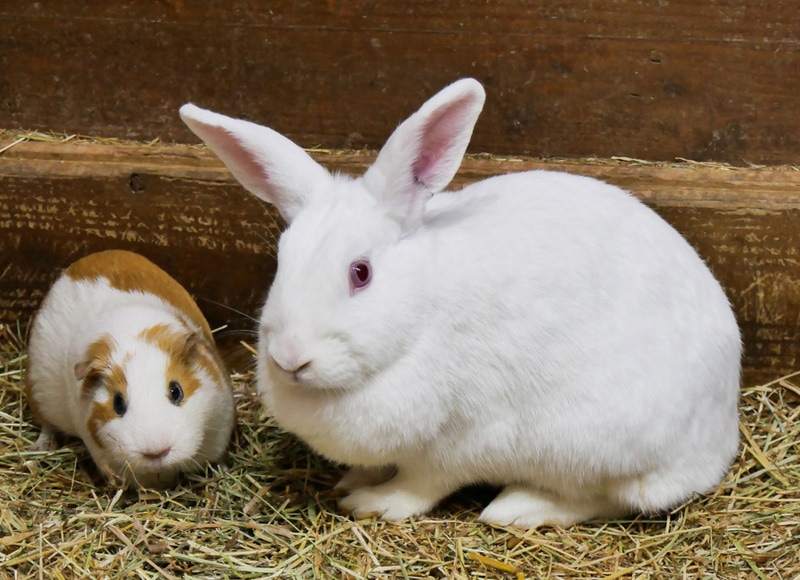
Click to Skip Ahead
Are you considering adding both rabbits and guinea pigs to your furry family, but unsure if they can coexist peacefully? The question of whether rabbits can live with guinea pigs is a common concern among pet owners. While both animals are adorable and have many similarities, such as being herbivores and requiring similar care, their compatibility as roommates is a topic worth exploring. While it is possible for rabbits and guinea pigs to coexist, it’s not recommended to house them together permanently. Rabbits and guinea pigs have different dietary and social needs, which can lead to conflicts and health issues if they are forced to live together for an extended period of time. In this article, we’ll delve into the dynamics of introducing rabbits and guinea pigs, their social behaviors, and the essential factors to consider in order to ensure a harmonious living arrangement.
The Typical Compatibility Between Rabbits & Guinea Pigs
Before diving into the topic of cohabitation, it helps to understand the natural compatibility between rabbits and guinea pigs. While both animals are small and herbivorous, they do have some key differences in their social behavior and communication.
Rabbits are social animals that thrive in the company of their own kind, while guinea pigs are highly social creatures that benefit from companionship. This shared need for social interaction may suggest that rabbits and guinea pigs could potentially live together peacefully.
But…it’s crucial to note that there are no guarantees when it comes to interspecies relationships. Each rabbit and guinea pig has its own unique personality, and their compatibility can vary. Some rabbits and guinea pigs may form strong bonds and enjoy each other’s company, while others may not get along at all.
Factors such as age, gender, and individual personality can all influence the success of their cohabitation. It’s essential to carefully observe their interactions and be prepared to make adjustments if needed.
You’ll also want to assess the physical and mental well-being of your current pet and potential new addition. Ensure that both the rabbit and guinea pig are healthy, up to date on vaccinations, and free from any contagious diseases. A quick visit to the bet before introducing them can help ensure a smooth transition and reduce the risk of health issues.
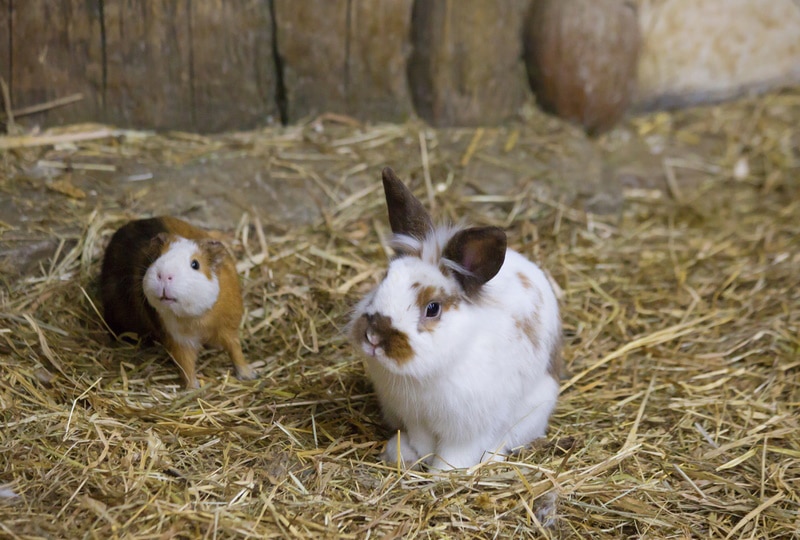
The 2 Reasons You Shouldn’t House Rabbits & Guinea Pigs Together
1. They Have Different Diets
One of the main reasons why rabbits and guinea pigs may not be able to be housed together is because of their different dietary requirements. Rabbits are herbivores and require a diet that is high in fiber, such as hay and fresh vegetables. On the other hand, guinea pigs are also herbivores but have different nutritional needs. They need a diet that is rich in vitamin C, which can be found in fruits and vegetables. If rabbits and guinea pigs are housed together, there is a risk that one animal may dominate the food supply, leading to malnutrition and health problems for the other.
2. They Have Different Social Preferences
Another reason why rabbits and guinea pigs should not be housed together is because of their different social behaviors. Rabbits are highly territorial animals and may become aggressive towards guinea pigs if they feel their space is being invaded. Additionally, rabbits are much larger and stronger than guinea pigs, which can result in unintentional harm if they were to engage in rough play or fights. It is important to provide each animal with their own space to ensure their safety and well-being.
The 4 Other Factors to Consider
Introducing rabbits and guinea pigs to each other requires careful planning and consideration. Here are some important factors to keep in mind as to why bringing them together isn’t a good idea.
1. Space
Providing enough space is crucial for the well-being of both animals. Each should have their own separate living areas, with enough room to move around comfortably. It’s recommended to have a cage or hutch for each pet, allowing them to retreat to their own space when needed.

2. Personality
Each rabbit and guinea pig has its own unique personality. Some may be more outgoing and sociable, while others may be more shy or territorial. It’s important to consider the temperament of your current pet and potential new addition to ensure compatibility. If possible, try to introduce them in a neutral territory to minimize territorial behavior.
3. Age
Age can play a role in the success of their cohabitation. It is generally recommended to introduce younger animals to each other, as they are more likely to adapt and form bonds. Older animals may be more set in their ways and less open to accepting a new companion.
4. Supervision
When introducing rabbits and guinea pigs, it’s crucial to supervise their interactions closely. Keep a close eye on their body language, such as any signs of aggression or fear. If any negative behavior occurs, be prepared to separate them and try again at a later time.
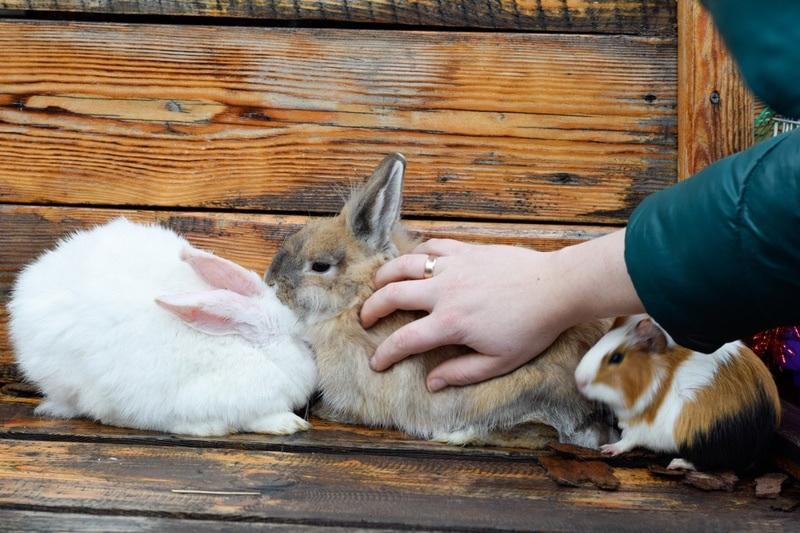
The 6 Steps to Successfully Introduce Guinea Pigs & Rabbits
Even though rabbits and guinea pigs shouldn’t live together, that doesn’t mean they can’t get along and play together. Introducing rabbits and guinea pigs requires patience and a gradual approach. So here are some ways to kick things off.
1. Separate Living Areas
Start by providing separate living areas for your rabbit and guinea pig. Doing so will help them to get familiar with each other’s scent without having direct contact. Place their cages or hutches side by side so they can observe each other without feeling threatened.
2. Scent Swapping
Exchange bedding or toys between the two animals to further familiarize them with each other’s scent. This helps reduce the initial novelty and can make the introduction process smoother.
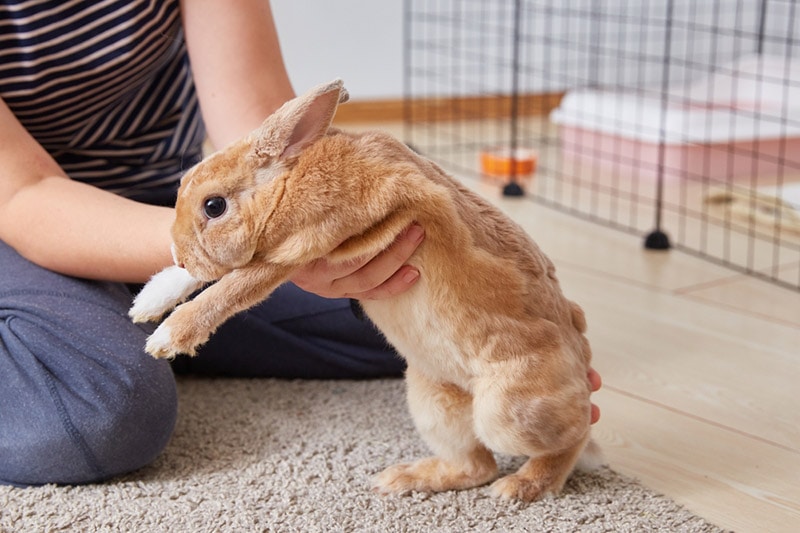
3. Neutral Territory
When both animals seem comfortable with each other’s scent, it’s time to introduce them in a crucial territory. This can be a playpen or a large, enclosed area where neither animal has established dominance. Supervise their interactions closely and be prepared to intervene if necessary.
4. Short and Supervised Sessions
Begin with short, supervised sessions of around 15–20 minutes. Gradually increase the duration as they become more comfortable with each other. Watch for any signs of aggression or stress and separate them immediately if necessary.
5. Positive Reinforcement
Reward both animals with treats and praise for calm and friendly behavior during their interactions. This helps create positive associations and reinforces the idea that being together is a positive experience–remember that both animals can be territorial initially.
6. Gradual Integration
Once the initial introductions go well, you can gradually increase the amount of time they spend together. However, it’s important to always provide separate living areas and supervised time together to ensure their safety and well-being.
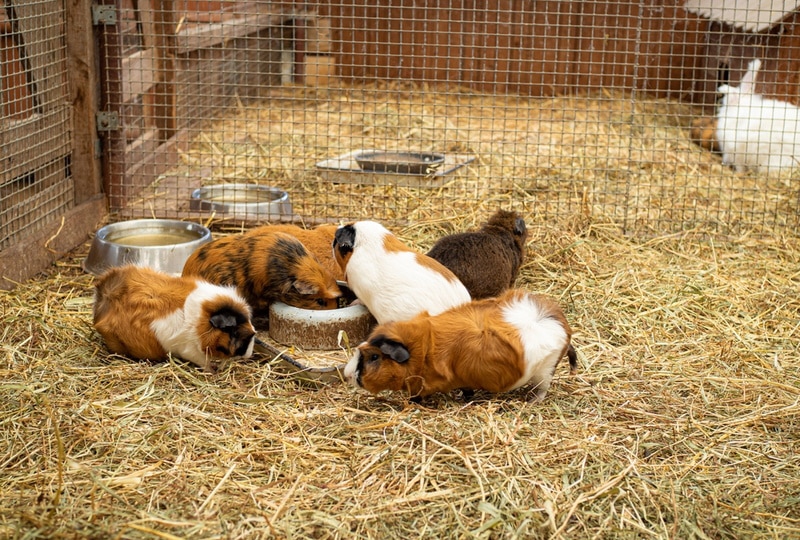
The 5 Signs of Successful Rabbit & Guinea Pig Friendship
When rabbits and guinea pigs are friendly, there are several positive signs to look out for. Here are some common ones.
1. Grooming
Mutual grooming is a positive behavior that indicates a bond between animals. If you observe your rabbit and guinea pig grooming each other, it’s a good sign that they have established a friendly relationship.
2. Relaxed Body Language
Both animals should exhibit relaxed body language when together. They should not show signs of fear, aggression, or stress. Relaxed body language includes a loose posture, wagging tail (for rabbits), and an alert but calm demeanor.
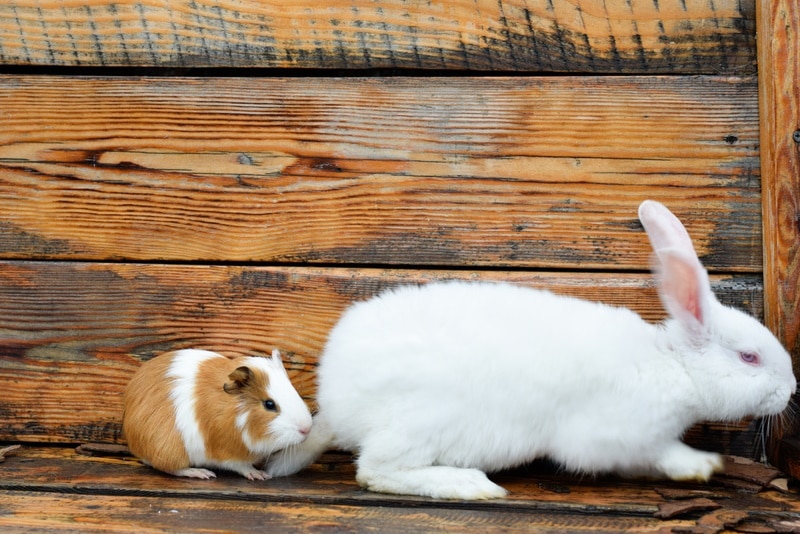
3. Playfulness
Rabbits and guinea pigs enjoy playing, and a harmonious pair will engage in play together. If you see them chasing each other, playing with toys, or engaging in zoomies (quick bursts of running around), it’s a positive indication that they are enjoying each other’s company.
4. Sharing Space
If your rabbit and guinea pig are comfortable sharing space without displaying territorial behavior, it’s a positive sign of their coexistence. They may choose to rest or sleep near each other, indicating a level of comfort and trust.
5. Vocalizations
Happy vocalizations, such as soft purring or chirping, can indicate that your rabbit and guinea pig are content and enjoying each other’s company. These sounds are a positive sign of their bond.
By observing these signs, you can determine whether your rabbits and guinea pigs are enjoying each other’s company.
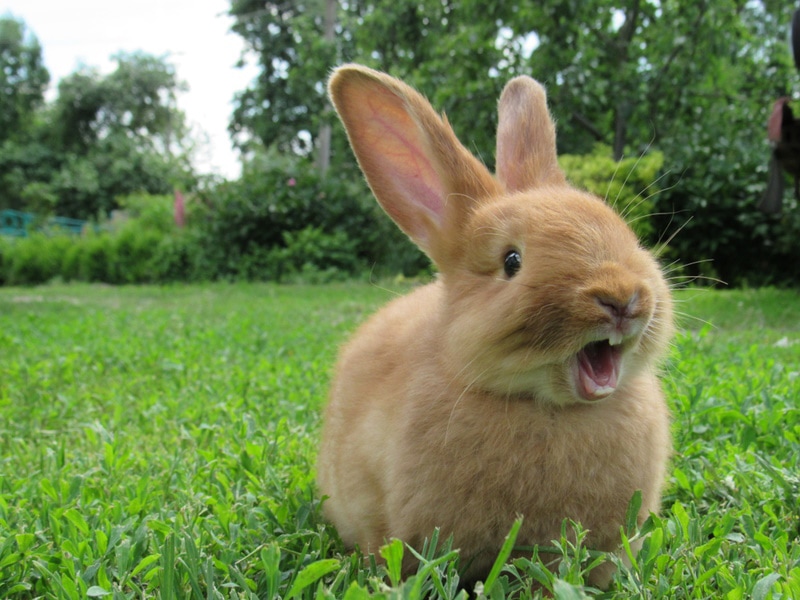
Wrapping Things Up
So, while it may seem tempting to house rabbits and guinea pigs together due to their similar appearance and size, it’s generally not recommended to do so. These two animals have different dietary requirements and social behaviors, which can lead to conflicts and health issues if they are forced to live together. So be sure to provide each animal with their own separate living space to ensure their individual needs are met and to prevent any potential harm.
Featured Image Credit: Ear Iew Boo, Shutterstock


